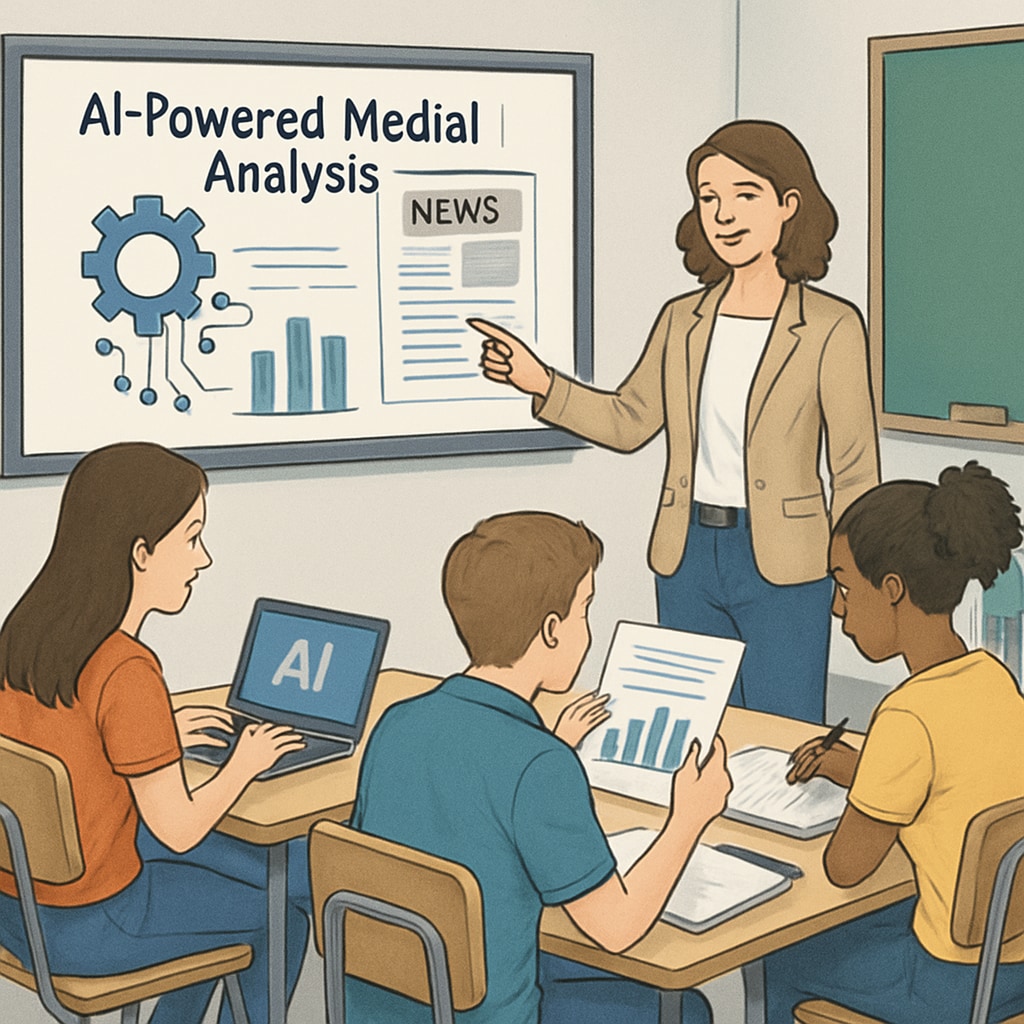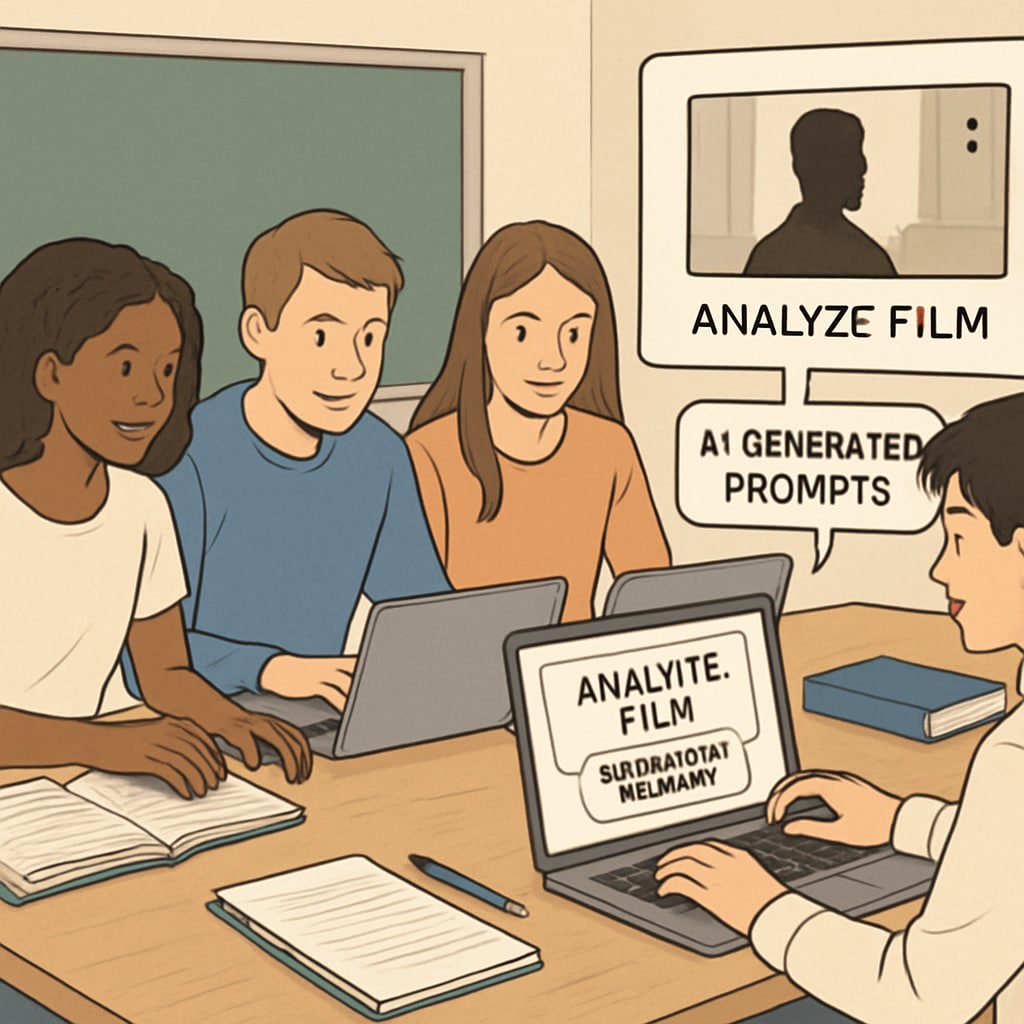The integration of AI writing prompts, media literacy, and teaching resources into classrooms is revolutionizing the way students engage with films and media. Aimed at high school learners in grades 9-12, these innovative tools are designed to enhance critical thinking and visual storytelling skills. By incorporating artificial intelligence into structured writing exercises, educators now have access to practical resources that bridge the gap between traditional media analysis and modern technology. This article delves into the benefits of these AI-driven prompts and their transformative impact on media literacy education.
Why Media Literacy Matters in High School
Media literacy refers to the ability to critically analyze and interpret media messages, ranging from movies and advertisements to social media posts. In today’s digital age, where students are constantly exposed to a flood of information, developing media literacy is essential. It empowers students to make informed decisions, recognize biases, and understand the intent behind visual storytelling.
However, teaching these skills can be challenging. Traditional methods often fail to engage students who are accustomed to dynamic, interactive technology. This is where AI writing prompts come into play. By leveraging AI tools, educators can create more engaging and interactive learning experiences, helping students better connect with the material.

How AI Writing Prompts Enhance Media Literacy
AI writing prompts are structured activities or questions generated by artificial intelligence to stimulate critical thinking and creative expression. These prompts can be tailored to specific films or media topics, enabling students to explore complex themes such as character development, symbolism, and narrative structure. Here are some key ways AI writing prompts contribute to media literacy:
- Structured Learning: AI-generated questions provide a clear framework for analysis, ensuring students focus on essential aspects of a film or media piece.
- Critical Thinking: Prompts encourage students to question underlying messages, identify biases, and evaluate the effectiveness of storytelling techniques.
- Engagement: Interactive and adaptive AI tools make the learning process more appealing to tech-savvy students.
- Personalization: AI can adapt prompts based on individual students’ skill levels, ensuring a tailored learning experience.
For example, an AI prompt might ask, “How does the use of color in this scene reflect the protagonist’s emotional state?” Such questions encourage deeper analysis and help students understand the nuances of visual storytelling.
Practical Applications in the Classroom
The implementation of AI writing prompts in classrooms is straightforward and highly adaptable. Teachers can use these prompts to supplement traditional lesson plans or as standalone activities. Below are some practical applications:
- Film Analysis Assignments: Students can use AI-generated prompts to analyze specific scenes, characters, or themes in a movie.
- Group Discussions: AI prompts can serve as the basis for class debates or group projects, fostering collaboration and diverse perspectives.
- Creative Writing Exercises: Students can respond to prompts by crafting their own stories, scripts, or reviews, applying the concepts they’ve learned.
By integrating AI tools, educators not only make media literacy more accessible but also prepare students for a future where technology plays a central role in communication and storytelling.

Challenges and Opportunities
While the benefits of AI writing prompts are significant, there are challenges to consider. For instance, some educators may require training to effectively use AI tools, and schools may need to address issues related to technology access. However, these challenges are outweighed by the opportunities AI presents. By incorporating AI into media education, schools can:
- Enhance student engagement through interactive technology.
- Foster 21st-century skills such as critical thinking, creativity, and digital literacy.
- Bridge the gap between traditional education methods and modern technological advancements.
Conclusion: Transforming Media Literacy with AI
The use of AI writing prompts, media literacy, and teaching resources offers a powerful way to enhance education for high school students. By merging technology with traditional teaching methods, educators can create a more dynamic and effective learning environment. As a result, students not only gain a deeper understanding of media but also develop critical skills that will serve them well in the digital age.
For educators looking to integrate AI into their classrooms, the possibilities are endless. With the right tools and resources, we can empower the next generation to become thoughtful, informed, and creative contributors to the world of media.
Readability guidance: The article uses short paragraphs, bullet points, and clear transitions to ensure accessibility. It balances academic rigor with practical advice, making it suitable for both educators and students.


